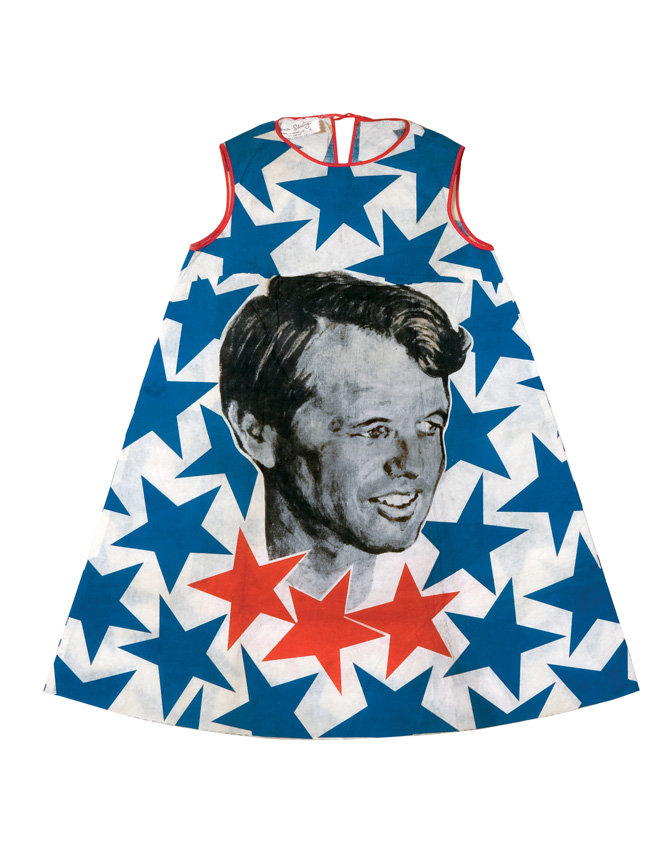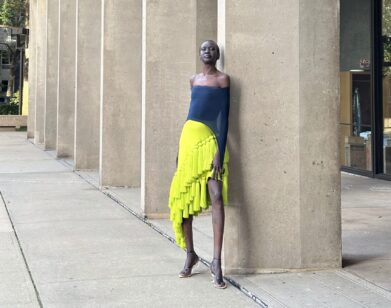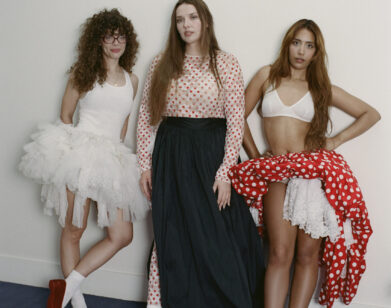Clothing Doesn’t Grow on Trees

It was only a year ago that we were contemplating the potentially negative impact of ‘disposable fashion’, high-style clothes that cost less than a latte at Dean & Deluca, pioneered by fast fashion giants H&M, Forever 21, and Target. Throwaway outfits added to our carbon emissions by encouraging shoppers to buy double or triple the amount they would normally consume. But if a pair of spandex—the synthetic answer to rubber—Forever 21 leggings are considered disposable (disposable, maybe; biodegradable, hardly), what about paper clothes? (Left: Harry Gordon’s Papieren Juken Verpakking, 1986. Courtesy Atopos.)
The MoMu Fashion Museum in Antwerp, Belgium harkens back to the forgotten age of paper prêt-a-porter in their show PAPER FASHION, open March 6 through August 16. In collaboration with Atopos Cultural Organization, the show reveals this exceptional niche in the history of fashion. While ancient China and Japan had long traditions of working paper into applications for apparel, in the West, paper only appeared as a substitute for textiles in the first half of the 20th Century, as a reaction to war-time inflation. It wasn’t until the late 1960s that paper clothing and accessories became a prevalent part of fashion history in the West. How, you ask? The fad can be traced back to 1966 when Scott Paper Company used the paper dress to promote their toilet paper and paper tissues. For a buck-twenty-five, homely housewives were mailed a paisley or op-art ‘Paper Caper’ dress and some coupons to buy napkins and toilet rolls. The fad caught on and soon, other manufacturers followed with designs to promote their own goods.
Hussein Chalayan, Airmail Dress, 1999. Robert Kennedy Dress, New york, 1968, Courtesy Atopos.
Beginning with a collection of almost 400 paper dresses from the Atopos collection, PAPER FASHION focuses on the use of paper and related materials in modern and contemporary fashion as well as ancient Eastern practice. From Pop art to political campaign slogans, the paper dress was universal. The concept of paper fashion even stimulated the textiles industry to seek out alternative materials that looked like paper, but which offered more possibilities. MoMu’s PAPER FASHION brings together the most remarkable of these creations, including designs by Hussein Chalayan, A.F. Vandevorst, John Galliano, Walter Van Beirendonck, Dirk Van Saene and Issey Miyake, among others.






